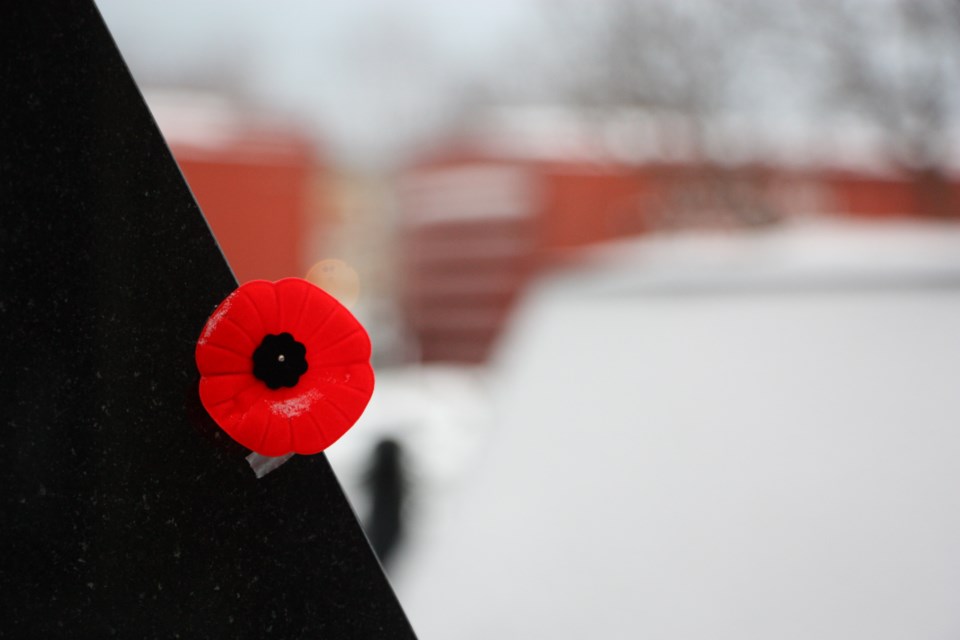Postcard Memories is a series of historic views, stories, and photos of Bradford and the area, a trip down memory lane on a Saturday morning.
Did you know there are many streets in town named after veterans who fought for our freedom?
More than 50 of the town’s streets are now named for those who served their country, some of whom survived to return home and some who were killed in action.
Here are just a few of the vets honoured with their own street name and a bit about their history and service.
Breeze Drive
Named in honour of John Douglas Breeze, who was born in Durham, England on March 30, 1912. He moved to Canada and worked as a farmer, and enlisted in the war on Sept. 4, 1939, into the 51st Anti Tank Bts. Canadian Artillery.
He arrived in England on Dec.30, 1939, and was stationed at Aldershot Camp.
He acted in the capacity of Gunner and helped break up many enemy tank threats.
Breeze was awarded the Military Medal for bravery in the field.
Kneeshaw Place
Named in honour of 1st Lt. Arthur Kneeshaw, RCAF who was born on June 11, 1918.
He enlisted in the RCAF on July 15, 1941 and trained as an Air Gunner and in night flying41, and was assigned to a Special Crew RAF, Coastal Command in Malta in 1943.
He was responsible for escorting vessels, patrols and anti-submarine operations.
In 1944, he was transferred to England for Air-Sea Rescue.
After his discharge, he moved to Bradford in 1945, and worked at Kneeshaw Insurance as Justice of the Peace and retired in 1984.
Some of the medals he received include the 1939-45 Star, Atlantic Star, Canadian Volunteer Service Medal and Clasp Defense Medal and War Medal 1939-45.
Booth Avenue
James Booth enlisted in the Army in 1940 and served with 77 Squadron RAF as Wireless Operator and Air Gunner.
In August 1943, his aircraft was shot down and ditched in Patricia Bay. He and his crew waited for hours ina dinghy until help arrived, and joined the unofficial 'Golf Fish CLub' of air crews who ditched at sea.
He was discharged from the Air Force in 1945 and moved to Bradford in 1956, and worked at the Provincial Government until 1977.
His medals include the 1939-45 Star, France and Germany Star, Defense Medal, Canadian Volutneer Service Meal and clasp, War Medal 1939-45, Operational Wing, Wireless and Air Gunner's badges, and Normandy Commemoration Medal.
McKinstry Road
Named in honour of James G. McKinstry who was born in Bradford on Dec. 4, 1884.
He enlisted in the ward in 1915 to the 10th Royal Grenadiers.
He served at Bramshott Camp and was in the rank of A/L Corporal in 1916 and appointed A/Cpl. in 1917.
He served in France and Flanders as Pioneer Batallion. He was dispatched to the front as part of the Canadina Coprs below Vimy Ridge.
In October 1917, McKinstry was killed in action at Passchendaele and is buried in Ypres Reservoir Cemetery in Belgium.
Hopkins Crescent
Named after Padre Hopkins who was born on Aug. 18 1925 in Perth, Ontario.
He was ordained as a deacon and priested in 1950.
In 1953 he enlisted in the Royal Canadian Army Chaplain Corps and was posted to Korea in August 1954. Upon returning to Canada he served in New Brunswick. He went on to serve in Egypt as part of the United Nations Emergency Force, and as Chaplain to Sunnybrook Veterans' Hospital, and later at the Royal Canadian School of Military Engineering in B.C. and Royal Candian School of Signals in Kingston.
He was promoted to Major in 1963, then to Lieut. Colonel in 1970 to become command Chaplain. He was then the Command Chaplain at headquarters and promoted to Colonel and then Director of Chaplaincy Administation at National Defense Headquarters, then promoted to Brigadier General in 1981 in Ottawa.
He retired from the Armed Foriced in 1984 and was appointed rector of the Anglican Parish of Bradford, and was the Chaplain for the Bradford Legion. He was recipient of the following medals: Merit of Canada, Lorea Medal, United Nations Korea Medal, United Nations Operation Medal, and Canadina Decoration and Bar.
Walker Avenue
Brad Walker was born in Hamilton on Dec. 1, 1917 and enlisted in the Air Force on May 27, 1940.
He served in Canada until Dec. 1940, and was then sent to the United Kingdom.
He piloted a Spitfire, conducting Fighter Sweeps, escorting bombers and ships, and kept enemy runways out of commission.
He was awarded the Distinguished Flying Cross at a Royal Investiture on June 6, 1942 for Leadership and Meritorious Service in the Air, and awarded the American Air Medal from the U.S. government for his leading of the air combats against the Japanese invading forces.
Walker moved to Bradford in 1951.
-from the BWGPL Archives, BradfordTimes



